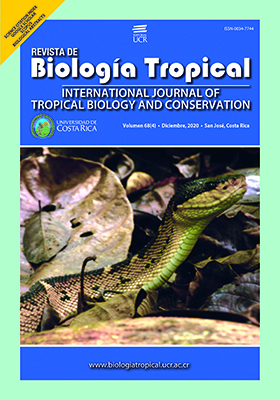Abstract
Introduction: The Black-headed Bushmaster (Lachesis melanocephala) is a large venomous snake that inhabits tropical moist forest, wet forest, montane and premontane wet forest in Southwestern Costa Rica and extreme Western Panama. Objective: We assign a neotype for the species due to the loss of the original holotype and update the information on its geographical distribution, natural history, and conservation status. Methods: To determine the conservation status of L. melanocephala, we modeled its potential distribution using the species` locality records and distribution modeling analysis implemented in MaxEnt. Based on the species’ potential distribution, we evaluate the loss of its original habitat and estimate the percentage of its distribution area that is currently protected by the country’s protected area system. Results: The potential distribution of the species was estimated at 10 139 km2, including areas where the species currently occurs and historical areas where the species has been registered but is nowadays considered locally extinct. About 29 % of that potential distribution overlaps with protected wild areas, so less than a third of the potential distribution of the species is under protection. Conclusions: During the last decade, accelerated habitat loss and growing evidence of declining natural populations indicate the need for urgent protective measures to prevent the extinction of this species in the foreseeable future.
##plugins.facebook.comentarios##

This work is licensed under a Creative Commons Attribution 4.0 International License.
Copyright (c) 2020 Alejandro Solórzano, Mahmood Sasa






